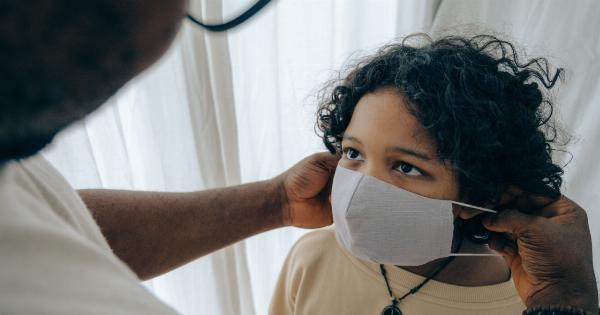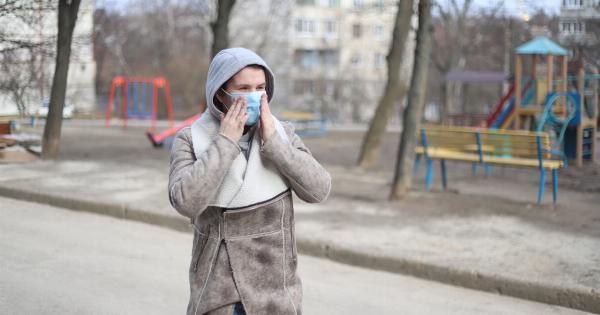The flu, also known as influenza, is a contagious respiratory illness caused by influenza viruses. Each year, flu season hits and millions of people worldwide become infected.
While most cases result in mild symptoms and a quick recovery, some individuals are at a higher risk of developing severe complications. Unfortunately, the latest statistics reveal a concerning rise in hospitalizations and deaths due to the flu. In just one day, there have been 60 new hospitalizations and 108 deaths reported.
Understanding the Flu
The flu is caused by various strains of the influenza virus, with the most common being influenza A and B. It spreads from person to person through respiratory droplets produced when an infected individual coughs, sneezes, or talks.
These droplets can land in the mouths or noses of people nearby or be inhaled into their lungs.
Typical symptoms of the flu include fever, cough, sore throat, runny or stuffy nose, muscle or body aches, headaches, fatigue, and sometimes vomiting and diarrhea.
Most people recover within a week or two, but certain populations are at a heightened risk, such as young children, older adults, pregnant women, and individuals with underlying health conditions.
The Alarming Rise in Hospitalizations
In recent data released by health authorities, it has been revealed that there have been 60 new hospitalizations due to the flu in just one day.
This sudden increase in severe cases indicates a potential strain of the virus that is more virulent or affecting vulnerable individuals more severely.
Hospitalizations primarily occur in patients who develop complications from the flu. These complications can include pneumonia, bronchitis, sinus infections, ear infections, and even life-threatening conditions like sepsis.
In severe cases, hospitalization is necessary to provide intensive care and support to affected individuals.
The spike in hospitalizations is a clear warning sign that the flu virus is currently causing more severe illness than anticipated.
It emphasizes the importance of taking preventative measures and seeking medical attention if flu symptoms worsen or persist.
108 Lives Lost: Understanding the Fatal Consequences
In addition to the rising hospitalizations, there have been 108 deaths reported in just one day due to complications stemming from the flu. This loss of life is tragic and highlights the potential dangers associated with the virus.
While most healthy individuals recover from the flu with proper rest and care, certain populations, such as older adults and those with compromised immune systems, are at a higher risk of severe illness or death.
The flu can exacerbate existing health conditions or lead to severe complications that compromise vital organ function.
It is crucial for individuals who fall within high-risk categories to take extra precautions during flu season.
These precautions may include getting the flu vaccine, practicing diligent hand hygiene, avoiding crowded areas, and minimizing close contact with individuals who are ill.
Preventing the Spread of Flu
Prevention plays a pivotal role in controlling the spread of the flu virus. Here are some essential steps individuals can take to reduce their risk of contracting and spreading the flu:.
1. Getting Vaccinated
The flu vaccine is one of the most effective ways to protect against the flu. It is recommended for individuals aged six months and older, especially those at higher risk of developing severe complications.
The vaccine is typically available in the form of an injection or nasal spray.
2. Practicing Good Hand Hygiene
Regular handwashing with soap and water for at least 20 seconds or using hand sanitizers with at least 60% alcohol content can help eliminate flu viruses on the hands.
Avoid touching the face, especially the eyes, nose, and mouth, as that can provide a pathway for the virus.
3. Covering Coughs and Sneezes
When coughing or sneezing, it is crucial to cover the mouth and nose with a tissue or the inside of the elbow. This prevents respiratory droplets from spreading in the air or onto surfaces that others may come into contact with.
4. Avoiding Close Contact
During flu season, it is wise to avoid close contact with individuals who have flu-like symptoms. If possible, it is recommended to stay at least six feet away to minimize the chances of exchanging respiratory droplets.
5. Cleaning and Disinfecting
Regularly cleaning and disinfecting frequently-touched surfaces, such as doorknobs, light switches, and cellphones, can help reduce the transmission of the flu virus. Using EPA-approved disinfectants is recommended.
Seeking Medical Attention
If flu symptoms worsen or persist, it is crucial to seek medical attention promptly. Healthcare professionals can provide appropriate treatment and support, particularly to individuals at higher risk of complications.
Conclusion
The recent surge in hospitalizations and deaths due to the flu is alarming. The influenza virus poses a significant threat, especially to vulnerable populations.
It is crucial for individuals to take proactive steps in preventing the spread of the flu by getting vaccinated, practicing good hand hygiene, covering coughs and sneezes, avoiding close contact, and regularly cleaning and disinfecting surfaces. By being vigilant and proactive, we can help minimize the impact of the flu and protect ourselves and those around us.






























